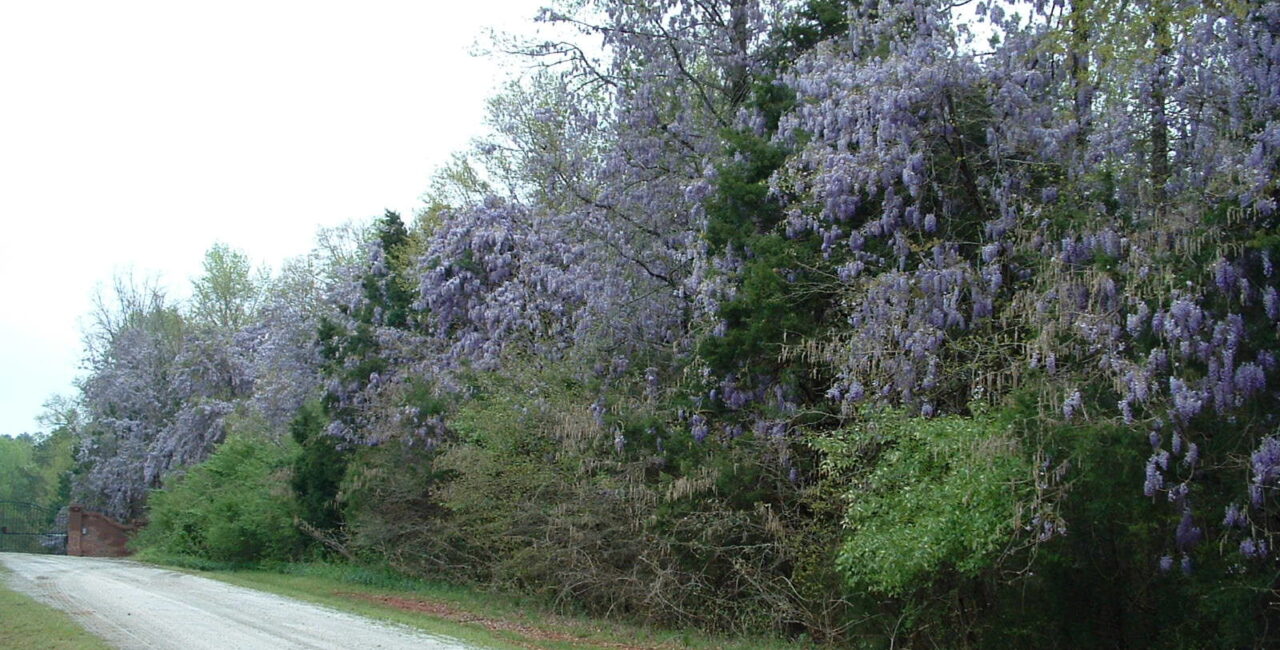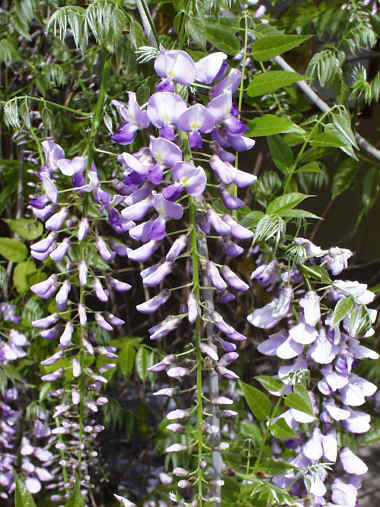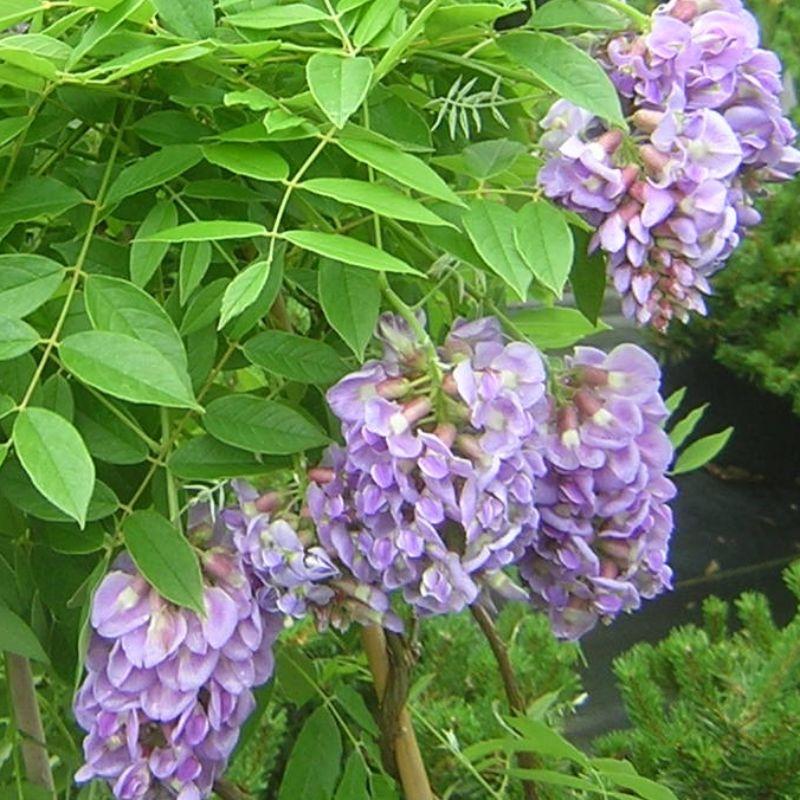
Wisteria: attractive but AGGRESSIVE!
Written 4/1/25
Yes, it’s wisteria again at the peak of its blooming now in town and along roadsides. These beautiful cascading bunches of fragrant purple blooms burst from a vine that is a good example of an invasive plant species.
Most of the vines you are seeing now are either Wisteria sinensis from China or Wisteria floribunda from Japan. They were introduced to American gardens in the 19th century and now have escaped to fields and natural areas where they grow quickly and aggressively. They will climb and cover whatever tree or other support that they can find. Wisteria may not yet be a match for Kudzu, but it’s running a close second pretty much throughout the southeast. When the vine is controlled by pruning, it can make a nice yard plant. Several really attractive varieties have been developed, including “alba,” a white version, and “rosea,” a deep pink version. If you plant exotic wisteria, just be sure to prune and CONTROL it.
But guess what? There’s a good alternative species of Wisteria which can be planted and won’t run rampant. It’s our American species, Wisteria frutescens, which grows in the southeast, and can be purchased at nurseries now. The South Carolina Plant Atlas reports collections from over two dozen counties of the state, mostly in the coastal plains. In Due West, it’s been found growing at three sites, and one of these is Erskine’s Pressly Garden on the split rail fence on Wightman Street. Some of this has been transplanted to the area behind the Daniel·Moultrie Science Center. It has climbed along the brick enclosure around the air conditioner on the greenhouse side, and is in bud now. Native Wisteria is available at nurseries now and a lovely variety. “Amethyst Falls” was developed in South Carolina, and named for our State Gem. A bonus of native wisteria is that it blooms twice each year, in spring as well as late summer.
You can tell the difference between native and exotic by several features including flower and fruit characteristics. Blossoms of the native are more dense and not hanging long and loosely as the exotic. Fruits (seed pods) of the native are smooth and hairless, whereas exotic pods are hairy with a velvety surface. Wisteria is a member of the economically important bean family Fabaceae, one of the largest families of flowering plants in numbers of different species. The bean family includes all forms of plants: trees, shrubs, vines and herbs.
So if your property is becoming overrun with wisteria, consider removal or severe pruning. If you want wisteria in your yard, plant our native species!

Wisteria sinensis

Wisteria frutescens: Amethyst Falls
